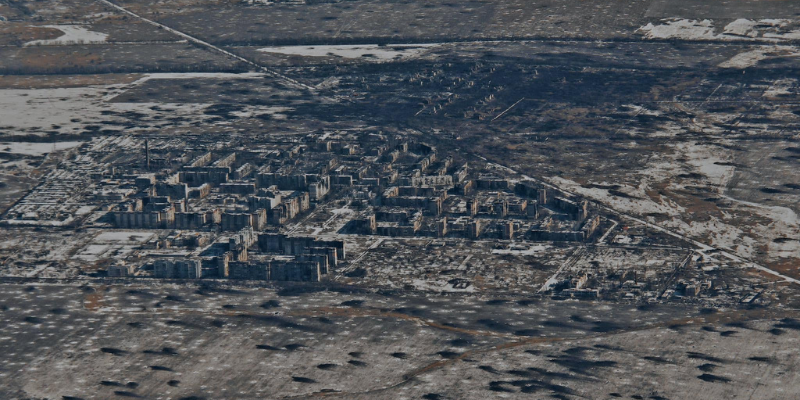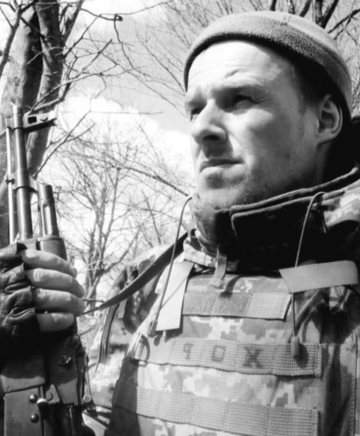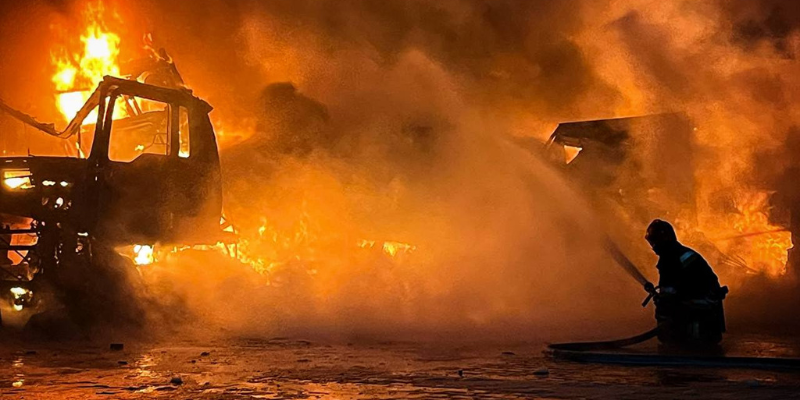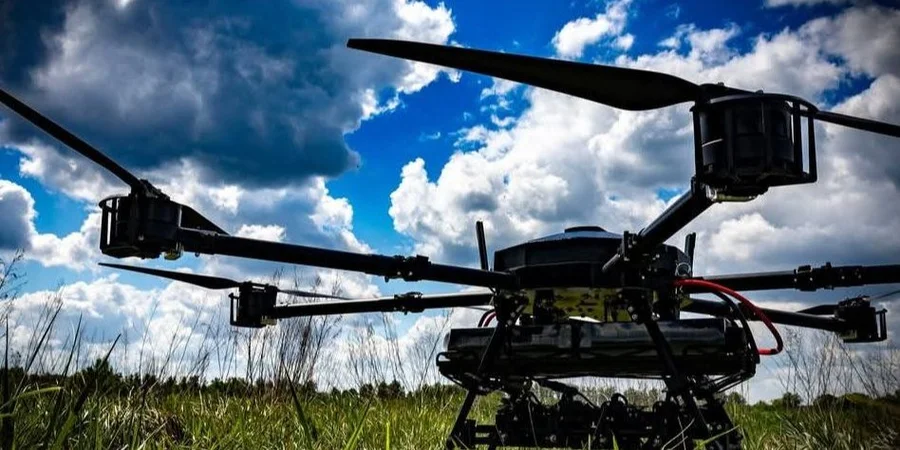Ukrainian forces leave Vuhledar in Donetsk Oblast due to threat of encirclement

Ukrainian troops have withdrawn from the city of Vuhledar in the Donetsk region due to the threat of being encircled by Russian forces. The decision to withdraw was made to protect the personnel and military equipment and to prepare for further fighting. The Russian army had already suffered significant losses during the prolonged war, but they continued trying to capture the city. They sent reserves to Vuhledar to weaken the defense of the Ukrainian Armed Forces through flanking attacks. This led to the potential encirclement of the city, prompting the Ukrainian High Command to authorize the maneuver of withdrawing the troops. The goal was to safeguard their resources and regroup for future actions.
SOURCESymbolic number of the Day
According to the General Staff of the Armed Forces of Ukraine, Russia has incurred significant losses in the war. In the past 24 hours alone, Russia lost 1,130 servicemen, along with 32 armored combat vehicles, 14 artillery systems, and four tanks. These recent losses add to the total combat losses suffered by Russia since February 24, 2022, which are estimated to exceed 655,000 personnel.
SOURCEWar in Pictures
In an attack at dawn on October 2, Russian troops targeted port and border infrastructure in the Izmail district of the Odesa region using attack drones. This resulted in a fire that firefighters swiftly extinguished. Additionally, the Orlivka checkpoint was damaged and two truck drivers were injured, one of whom is a Turkish citizen. The injured individuals are currently in the hospital receiving necessary assistance and are in moderate condition. As a result of the attack, crossing operations at the Orlivka checkpoint have been temporarily suspended. The head of the Odesa Regional State Administration, Oleh Kiper, described this act as terrorism against the civilian population, as it deliberately targeted the checkpoint and disrupted the lives of ordinary people trying to cross the border.
SOURCEVideo of the Day
Aerial reconnaissance men of the 11th Mykhailo Hrushevskyi Brigade destroyed three Zala-421s. The video confirmation was published on one of the National Guard’s channels. “Aerial reconnaissance men of the 11th Mykhailo Hrushevsky Brigade of the Southern Operational and Territorial Association of the National Guard of Ukraine continue to successfully destroy enemy reconnaissance drones in the Pokrovske and Sumy directions,” the National Guard said in a statement.
SOURCEISW report

Some Russian sources expressed doubts that Russian forces will be able to rapidly advance and achieve operationally-significant breakthroughs immediately after seizing Vuhledar. Some Russian milbloggers noted that they do not expect the frontline to collapse following the seizure of Vuhledar, citing Ukrainian defensive positions northeast of Vuhledar and the need for Russian forces to completely clear Vuhledar to make it a useable position from which they can launch future assaults.
One Kremlin-affiliated milblogger attempted to misrepresent Vuhledar as “the last Ukrainian city in the southern Donetsk direction” which underpins the “entire Ukrainian defense” in western Donetsk Oblast — implying that Russia can steadily advance in western Donetsk Oblast following the capture of Vuhledar. Another Kremlin-affiliated milblogger criticized a similar argument that the Russian seizure of Vuhledar would lead to the destruction of Ukrainian defenses in Donetsk Oblast and allow Russian forces to advance towards Kramatorsk and Slovyansk (both approximately 170km northeast of Vuhledar) after seizing Kurakhove and Pokrovsk. The milblogger implied that the argument dismisses the fact that Russian forces will need to fight through heavily fortified settlements far north and northeast of Vuhledar, such as Kostyantynivka, Dobropillya, Pokrovsk, Selydove, Kurakhove, Slovyansk, and Kramatorsk.
ISW previously assessed that Russia’s seizure of Vuhledar is unlikely to fundamentally alter the course of offensive operations in western Donetsk Oblast, largely because Vuhledar is not a particularly crucial logistics node and because Russian forces have controlled most of the main roads running into Vuhledar prior to October 1, meaning that Russian forces have already had the ability to interdict Ukrainian logistics in this part of the front to some extent. Vuhledar is also about 30 kilometers south of Russia’s current main effort in the Pokrovsk direction, so Russian forces would need to maneuver across 30 kilometers of open terrain to meaningfully support offensive operations southeast of Pokrovsk. Vuhledar is also located 23 kilometers south of the H-15 highway that stretches between Donetsk City and the Donetsk-Zaporizhia Oblast border area, but Russian forces would need to advance across an open field area during the upcoming muddy season to reach the highway. Advisor to the Donetsk People’s Republic (DNR) Head Igor Kimakovsky notably assessed before the Russian seizure of Vuhledar that the dirt road that Ukrainian forces could have used to withdraw from Vuhledar would soon become unusable due to mud, and it is likely that Russian forces will face similar problems if they soon resume mechanized assaults in the area.
SOURCEWar heroes

Fighter Dmytro Yavnyi died on June 24, 2024, while performing a combat mission in the Luhansk region. He was 34 years old. Dmytro lived in Khorostkiv, Ternopil region. He worked as a mechanic inspecting and repairing 5th-category locomotives at the maintenance points of the Ternopil locomotive depot of the Lviv Railway. His colleagues described him as a highly skilled repairman with a creative nature. In addition to his talent for repairing and maintaining complex equipment, the man had a talent for drawing.
“Dmytro was a man of action, a man of few words, calm, reserved, and at the same time hardworking,” recalls Pavlo Mazur, a shift foreman at the locomotive depot. “It was under his supervision that Dmytro worked and over 15 years of work went from a beginner to a highly skilled specialist.” ”He was very responsible, did his job thoroughly and never hesitated to ask for advice when necessary. By the way, his love of drawing came in handy. When painting locomotives, Dmytro was asked to do the most delicate work that required endurance and accuracy…”
Dmytro was mobilized into the Armed Forces in late February 2024. After training at the training ground, the defender performed combat missions at the front as part of an airmobile unit. He is survived by his daughter and other relatives.
Dmytro’s story on the Heroes Memorial – a platform for stories about the fallen defenders of Ukraine.
SOURCELatest news
- New French Prime Minister Barnier promises to continue supporting Ukraine
- Estonian government discussed the possibility of sending troops to Ukraine
- Manufacturer of Leopard tanks and Caesar howitzers now has its own company in Kyiv
- Russians announce conscription in temporarily occupied territories of Kherson Oblast
- EU approves sanctions package to address hybrid threats from Russia





